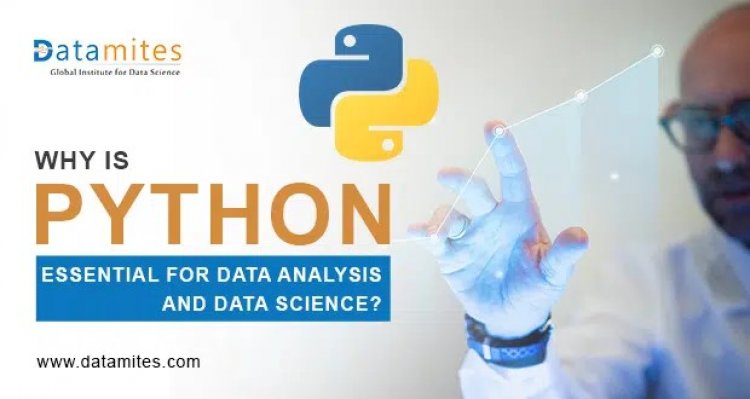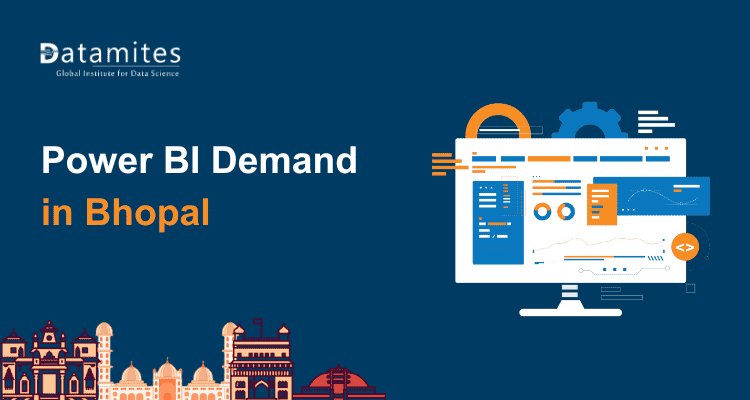Why is Python Essential for Data Analysis and Data Science?

Data is changing the face of our world by being the key component in various businesses. Making organizational decisions based on data would benefit the business in its growth.
Python remains to be the most popular programming language for data analysis as well as in the field of Data Science. Python is equipped with many libraries, which are used to manipulate the data by simplifying the task of data handling.
Python – popular programming language
- Python is an open source, high- level, interpreted and object-oriented programming language.
- The syntax is simple and it is easy to understand as well as to learn.
- Python is one of the popular languages, used for a wide range of software tasks such as web development, Data Science, Data Analysis, script writing and Gaming.
- It has a very large standard library along with a huge community support.
What is Data Analysis?
Data Analysis is a process of cleaning, analyzing, interpreting, and visualizing the data in order to uncover the hidden patterns and to devise valuable insights from the data so as to formulate effective solutions to business problems. Nowadays, in the business world, Data Analysis plays a significant role in formulating scientific decisions and assisting businesses in operating more efficiently. In order to extract useful information from large businesses, Data Analysis tools are used profusely.
Why is Python Essential for Data Analysis?
Today, Data Mining, Data Processing, Modelling and Data Visualization are using Python for data analysis.
A few libraries namely Scrapy and BeautifulSoup are Python-based libraries that can be used to handle large amounts of data.
Scrapy can be used to set up special programs that can collect structured data from the web, which is also widely used for collecting data from APIs. BeautifulSoup is used to retrieve data from APIs, it scrapes data and arranges it in a preferable format.
Python libraries of NumPy and Pandas are generally used for the purpose of data processing and modeling.
NumPy is chiefly put into use for doing numerical computations, arranging big data sets, and making math operations thereby making the vectorization on arrays easier. Pandas are used for data pre-processing and analysis. It has two data structures namely ‘series’ and ‘data frames’. These libraries help manipulate the complex data for performing various operations.
For data visualization, Matplotlib and Seaborn are the most widely used libraries. They help visualize the data in a beautiful and easy-to-understand format so that we can gain quick insights from it. This is done with the help of pie charts, pair plot, heatmaps, histograms, violin plots, etc.
What is Data Science?
Data science is a field of study wherein clean information is extracted from raw ones in order to formulate actionable insights from the data. In addition, it deals with finding solutions to the business statements involving large data.
Data scientists try to predict the future, frame those predictions in new questions, and attempts to extrapolate what might be.
Why is Python Essential for Data Scientists?
Data science-based organizations are empowering their developer’s group and data scientists to employ Python as a programming language in their domain. Data Scientists manage a large amount of data, namely big data, which is a significant one. With simple employment and a huge organization of python libraries, Python has become a prevalent choice to deal with big data.
The libraries such as Scikit learn Pandas, Numpy, Matplotlib, and Scipy are mainly used to perform machine learning algorithms and to do the pre-processing of data. Python has plenty of packages like Tensorflow, Keras, and Theano that are supporting data scientists with developing deep learning algorithms.
Indeed the growth of Python is promising as with time Python has come to become a core language wherein it is widely used for research, production, and development. Due to its scalability, flexibility and convenience Python has become inevitable for Data Analysis and Data Science. Python has a long way to go!





